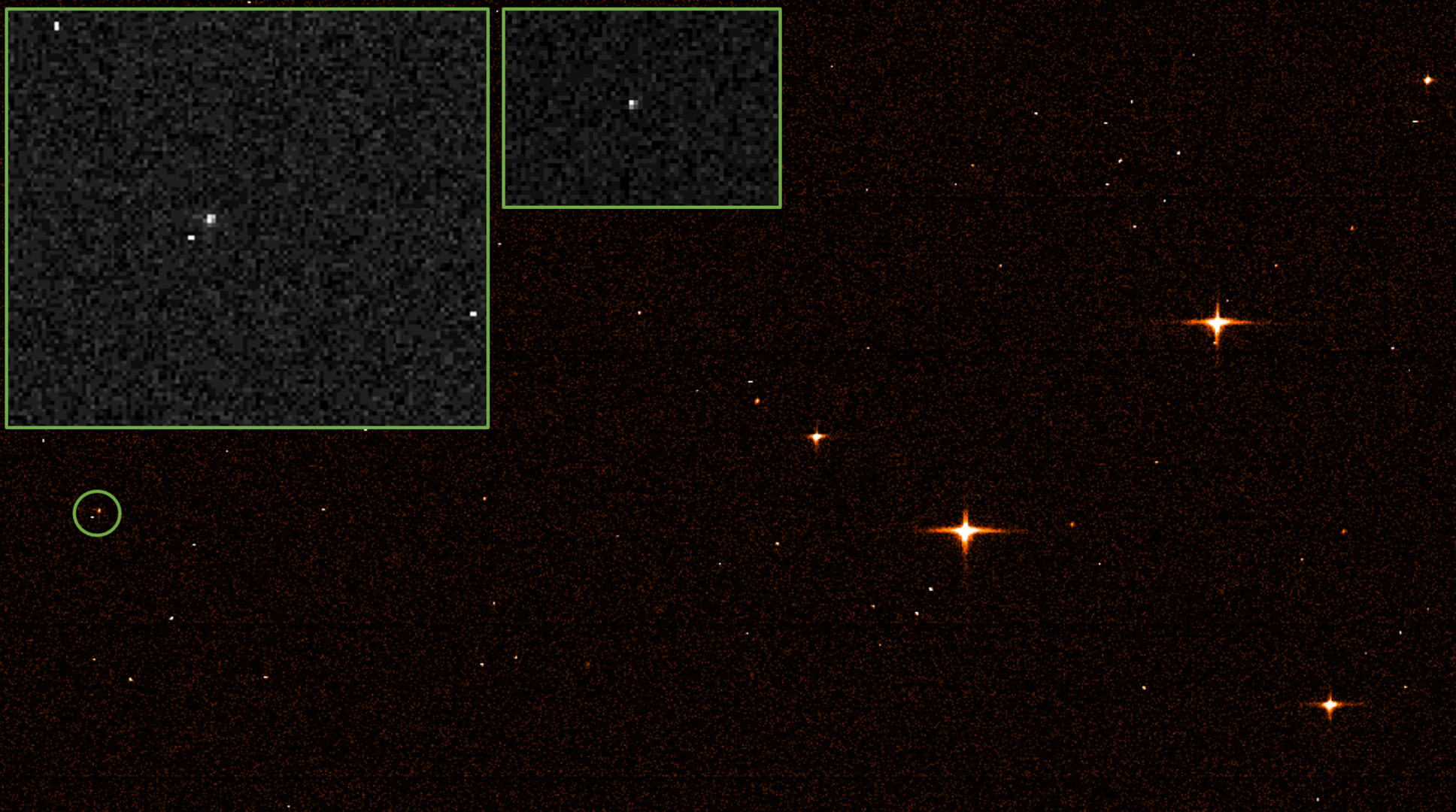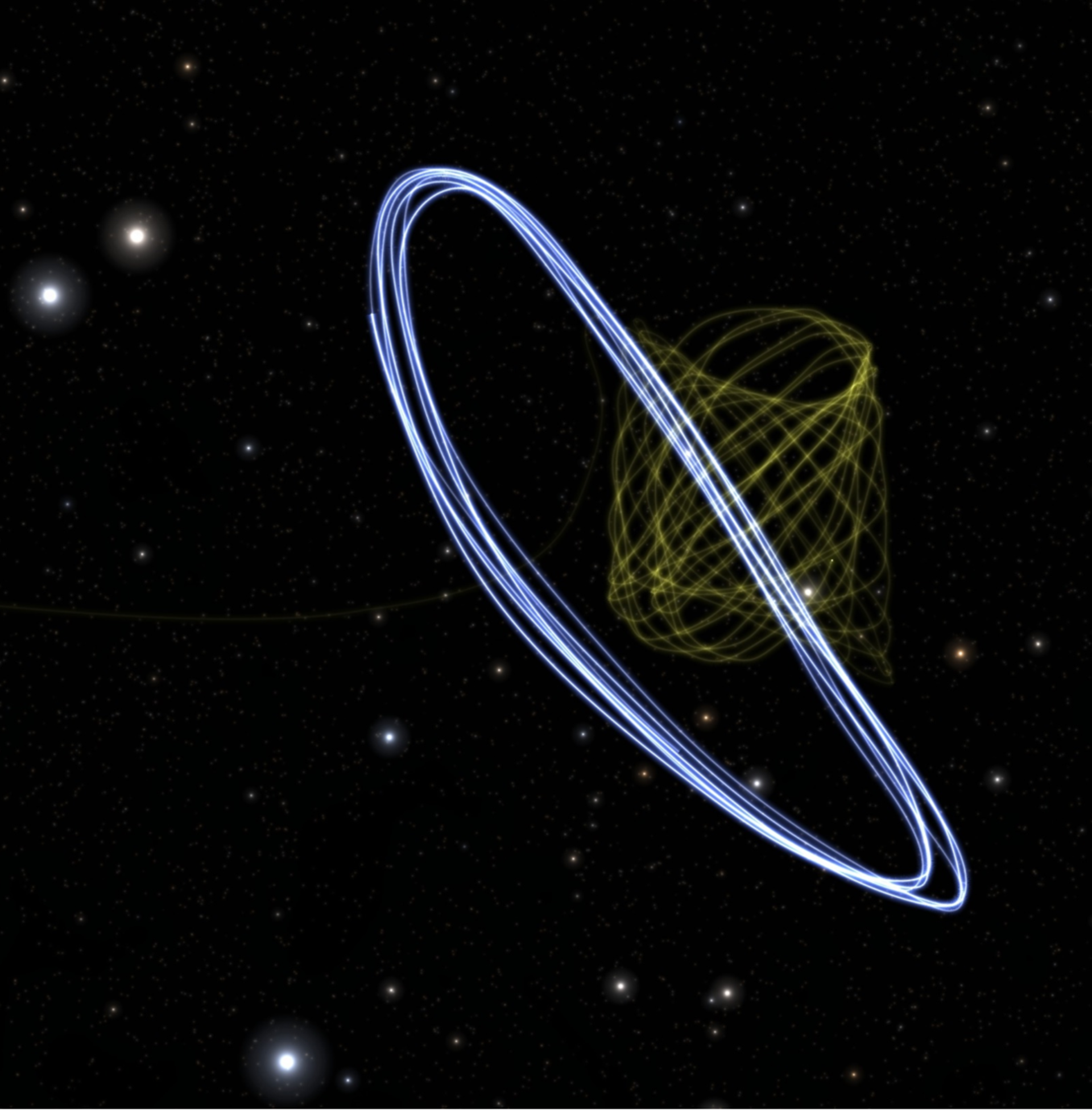James Webb Space Telescope spotted by Europe's Gaia spacecraft 1 million miles from Earth (photo)
The spacecraft were 620,000 miles apart in deep space.
A star-charting spacecraft spotted NASA's James Webb Space Telescope while both were working in deep space.
The European Space Agency's Gaia mission and the James Webb Space Telescope both orbit around Earth-sun Lagrange point 2, or L2, a gravitationally stable point between the sun and Earth that is roughly 930,000 miles (1.5 million kilometers) from Earth. And on Feb. 18, Gaia managed to spot the newcomer and catch an image of it on the first try.
"Very little reflected sunlight came Gaia's way, and Webb therefore appears as a tiny, faint speck of light in Gaia’s two telescopes without any details visible," agency officials wrote in a statement published Wednesday (March 16).
Live updates: NASA's James Webb Space Telescope mission
Related: How the James Webb Space Telescope works in pictures

The fortuitous imaging opportunity arose after Gaia experts Uli Bastian of Heidelberg University in Germany and Francois Mignard of Nice Observatory in France, realized during Webb's long journey out to L2 that after arrival, the spacecraft should be just within the star-charting spacecraft's field of view.
"Gaia is not designed to take real pictures of celestial objects," ESA noted. "Instead, it collects very precise measurements of their positions, motions, distances, and colors. However, one part of the instruments on board takes a sort of sky images. It is the 'finder scope' of Gaia, also called the sky mapper."
The sky mapper captures a 360-degree strip around the entire visible sphere every six hours. As each strip is captured, the image is slightly tilted to the last one, allowing the entire sky to be imaged over time. Usually these slices are used to look for star images to assist with Gaia's scientific mapping, and then deleted.
Get the Space.com Newsletter
Breaking space news, the latest updates on rocket launches, skywatching events and more!

"But the computer can be manually requested to exceptionally keep a stretch of the image data. The sky mapper was originally planned for technical servicing purposes, but during the mission it has also found some scientific uses. Why not use it for a snapshot of Webb?" ESA said.
The first opportunity arose on Feb. 18, when the spacecraft were roughly 620,000 miles (1 million km) apart. Mignard sent a delighted email to the team after the imaging opportunity passed. The subject line: "JWST: Got it!!" Webb was fully identified a few days later by Juanma Martin-Fleitas, ESA's Gaia calibration engineer.
Webb is working through commissioning stages to get ready for studying the deep universe, and the team expects to release images later Wednesday showcasing the latest stage in the months-long mirror alignment process. Commissioning is set to finish around June.
Meanwhile, the Gaia team is expected to release another set of data to the public in 2022 for analysis on the spacecraft's long-term mission to map star positions and to help investigators with charting the evolution and positions of a billion stars relatively close by to Earth.
Follow Elizabeth Howell on Twitter @howellspace. Follow us on Twitter @Spacedotcom and on Facebook.
Join our Space Forums to keep talking space on the latest missions, night sky and more! And if you have a news tip, correction or comment, let us know at: community@space.com.

Elizabeth Howell (she/her), Ph.D., was a staff writer in the spaceflight channel between 2022 and 2024 specializing in Canadian space news. She was contributing writer for Space.com for 10 years from 2012 to 2024. Elizabeth's reporting includes multiple exclusives with the White House, leading world coverage about a lost-and-found space tomato on the International Space Station, witnessing five human spaceflight launches on two continents, flying parabolic, working inside a spacesuit, and participating in a simulated Mars mission. Her latest book, "Why Am I Taller?" (ECW Press, 2022) is co-written with astronaut Dave Williams.









